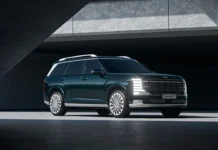
Ouch, that hurts my wallet.
As much as I’d like to refrain from looking around and saying, “Yep, we’re screwed”, new car prices have definitely been soaring. Before getting into the numbers, it’s worth mentioning, as ever, that this won’t go on forever. A recent Bloomberg report posits we’re right at a post-pandemic peak, and that’s been a key driver for U.S. inflation. However, Cox Automotive analyst Zo Rahim notes, “We are seeing a decelerating pace of price increases in the first two weeks of June, compared to what has been just an absolute surge”. As wholesale prices track downward, retail prices should (hopefully) follow suit.
By the end of May 2021, however, Kelley Blue Book noted average transaction prices for light vehicles in the United States closed out at $41,263. That’s up a substantial $2,125 (or 5.4%) from this point last year. It’s also a $493 (1.2%) increase just over April 2021.
Among the brands KBB noted, Mitsubishi actually enjoyed the highest gains in this sellers market. Their average transaction price was up 12%, to $25,221 in May 2021. No doubt that’s down to the new Outlander and it’s higher price tag, but it’s far from the only automaker whose prices have soared. Honda’s average prices are up 10.7%, while GM is up 10.9% and Stellantis brands (Alfa Romeo, Chrysler, Fiat, Jeep, Ram) are up 11.3%.

Heed the warning if you’re looking at big SUVs, minivans
After the COVID-19 pandemic, anecdotal evidence shows everyone wants to get out of the house. That’s pretty obvious if you live in a city where the traffic feels even more nightmarish than usual. Sales figures have been up across the board, and families in particular are gravitating toward big SUVs and crossovers, as well as minivans. On that last point, minivan prices have spiked an eye-watering 15.4% from $36,471 on average in May 2020 to $42,105 in May 2021. Full-size SUVs and crossovers are up 10.1% to an average transaction price of $68,970. Now, we have seen a tsunami of new launches, even among minivans. There’s the all-new Toyota Sienna, the Kia Carnival, and the all-wheel drive version of the Chrysler Pacifica. Big SUVs? Pretty much every automaker has their hat in the ring by now, and buyers are lapping them up like crazy.
As demand continues to outstrip supply, so too will average transaction prices continue to rise. Automakers have also shrunk incentives, in part to take advantage of the wild market and to recoup losses suffered from a crippling year in the wake of coronavirus-related problems. What’s more, there’s a larger glut of buyers as folks eschew public transportation in favor of new and used vehicles. As new inventory dried up, the secondhand market also went haywire, sending prices through the ceiling.
Again, it seems we may be at a peak here, and prices will come down in a few months’ time. Particularly if new car sales slow and plentiful inventory returns to dealer lots, automakers may kick up incentive programs again to keep the momentum going, making cars more affordable again. That will likely have a knock-on effect within the used car market, as well.























